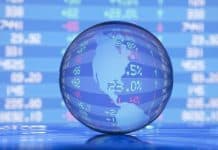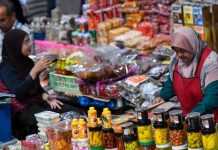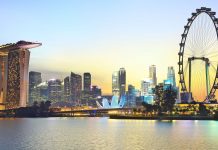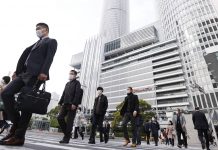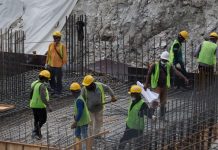Yes, they are rich, they have a GDP per capita of stunning $65,000 USD, and yes you can even call them crazy rich.
From an underdeveloped to a high income country, Singapore has grown exceptionally.
The interesting thing here is, they did it all without any proper resources.
Well, how did they manage to do this? Keep reading to find out.
For over 100 years, Singapore was under the British control. In August 1963, they seceded from the British Crown and merged with Malaysia. But just after two years, they got separated from Malaysia because of social and political issues.
Singapore gained formal independence on August 9, 1965, with Yusof bin Ishak serving as their first President and the highly influential Lee Kuan Yew as Prime Minister.
Even after independence, the struggle for Singapore was not over. They continued to experience many problems. Much of their people were unemployed, more than two-thirds of the population was living in slums, and life expectancy was very low.
Unlike many countries, Singapore is not gifted with vast majorities of natural resources, large population, and huge landmass.
What it does have is a good geographic location. The country is in the center of major shipping routes which connects the West with Asia’s big economies like China, Japan, and South Korea. We will discuss about Singapore’s geography in the later part of this article.
So, in order to grow their economy, Singapore needed a comprehensive program of industrialization with a focus on labor-intensive industries.
For that, their leaders began to experiment with globalization and foreign investment. But many investors hesitated to invest in this newly formed country. Now, to attract investors, Singapore had to create an environment that was safe, corruption free, and also low in taxation.
To make this feasible, the government became more autocratic. Corruption was reduced, law and order was properly implemented, and a business friendly environment was created.
These changes became very appealing to international investors in contrast to the neighbors where political and economic climates were unpredictable. Singapore became very stable comparatively.
To top this off with a cherry, they have a great geographic location. This has played a key role in economic development for many years.
You see, Singapore’s location provides great connectivity to major Asian economies and after the completion of the Suez Canal, in 1869, Singapore became more important for the British.
It was a gateway for them to control much of the Asian trade. So the British develop the port system for trade and also to station their troops in Asia.
Now with the advantageous geographic location and a good established port system, Singapore became and ideal place to manufacture goods.
By 1972, just seven years after independence, one quarter of Singapore’s manufacturing firms were either foreign owned or joint venture companies. The United States and Japan were major investors.
From 1965 to 1972, the country’s GDP experienced annual double-digit growth. The people of Singapore are known as the asset of their growth and the thing that made these assets even better was education.
As the country experienced a high level of foreign investments, they started investing in education and skill development programs. They set up many technical schools and paid international corporations to train their unskilled workers.
As the workforce became educated and skilled, they started to export high-end goods. In the 1970s, Singapore was primarily exporting textiles, garments and basic electronics.
But by the 1990s, they were engaging in Biotech research, Pharmaceuticals, Integrated Circuits and Aerospace Engineering.
Now even though Singapore does not have a large amount of natural resources, still their second largest export is refined petroleum products. Also there are currently over 3,000 multinational corporations operating in the country, accounting for more than two-thirds of the manufacturing output and direct export sales.
It’s just not manufacturing, Singapore’s geography has helped them grow different industries, especially the shipping industry. Singapore’s shipping port is used for changing cargo before reaching its final destination.
This is called transshipment. The port of Singapore is now the world’s busiest transshipment port ahead of Hong Kong and Rotterdam. In terms of total cargo tonnage handled, it has become the second busiest behind the port of Shanghai.
Also, the Singapore airport is the connecting hub for international air travel. This has helped the country to attract tourists. International tourist arrival have more than doubled since 1997 to 17.4 million in 2017.
Tourism contributes about $12 billion dollars to Singapore’s GDP, that is 4%.
This convenient location has helped the country to be a financial hub for many companies. Also, due to low tax rates, many assets formerly held in Switzerland have been move to Singapore. Many people call Singapore the Asian Swiss.
The low taxes doesn’t mean the government hate taxes, they just collect it in different ways. For instance, the government imposed very high taxes on vehicles. In 2018, they collected a whopping $3.6 billion dollars only through vehicle taxes.
Even though it seems like a bad thing, in reality it is actually not. That is because Singapore is a small country with a decent population and a high urban area, so the traffic problem is obvious.
Due to the high taxes, many people prefer not to buy cars and the government uses vehicle tax revenue to build public transport which undoubtedly is one of the best in the region.
Also, the Singapore government does not just spend all of the revenue generated from the exports and FDI. For infrastructure and other mandatory spending, they also invest in sovereign wealth funds.
Singapore has not one but two sovereign wealth funds with combined assets of over $900 billion dollars. These sovereign funds are counted among some of the biggest in the world.
So, till here everything seems so perfect, well that is because we haven’t yet discuss about the problems.
The first is income inequality. The Gini coefficient which measures income inequality shows the nation has a fairly high Gini coefficient of 0.45. A Gini coefficient above 0.4 usually signals a large income gap.
Although after accounting taxes and transfers it fell from 0.45 to 0.398 last year, but it is still high compared to other countries.
Similar to other developed nations, Singapore’s low birth rate is also causing challenges to their demography. This problem creates dependency on migrant workers for the labor supply.
The major problem is freedom of people. This is a very controversial topic among many citizens. To make the economic growth feasible, the citizens of the country had to suspend a large measure of their freedom for a more autocratic government.
In the freedom of press index, Singapore is on the 160th place out of 180 countries. This number is really bad.
So in conclusion, we can say even with smaller land mass and with very few natural resources, Singapore has made their workforce an asset by educating them for higher productivity.
Also Singapore has played smart by being a perfect middleman for many Western corporations operating in the region and took full advantage of Asia’s rising economy such as China, Japan, South Korea, and Taiwan.















